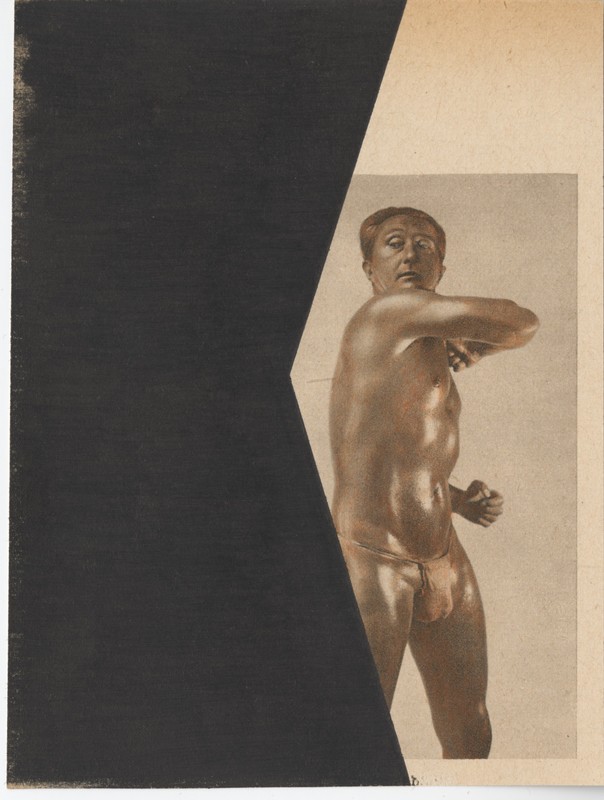Svatopluk Mikyta
05 - 27 Apr 2013
SVATOPLUK MIKYTA
Orange Human
5 - 27 April 2013
The Erika Deak Gallery is delighted to present a new installation by renowned Slovakian artist, Svatopluk Mikyta. This is his first solo exhibition in Budapest.
Svatopluk Mikyta makes videos, installations, performances, but he is most known of his „over-drawing" series . The base of his work is always a photo found in old books and postcards. When choosing an image, he is primarily interested in political iconography, nationalistic and religious symbols, or historical and cultural references holding allusions to present times. He re-draws, re-interprets these already existing images, and creates his own stories from them.
Orange People is an installation from his latest „re-drawn" series. The core of the exhibit is a book published in Germany, in 1938, in which Mikyta s often reoccurring theme, the perfect man is put on a piedestal. Nearly and totally naked men pose in idyllic environments, their flawless bodies appear as human gods, and show nothing but trust and content. He paints the originally black and white bodies orange, and as if the result of a fictional ethnographic research, Mikyta presents the birth of a new human race, the Orange People. He rewrites history, that is the original photos, and as if modern time plastic surgeon, creates his own absurd world. The orange figures, when shown in groups, appear more as abstract forms than humans, reality is manipulated on more than one level here. With painting all bodies identical, the artist poses many questions. Did we learn anything from the past, does propaganda still works, are there still differences between races and genders, what can we do with the individual and the collective memory? Mikyta s present exhibition is especially relevant in present Hungary.
Svatopluk Mikyta was born in 1973, in the former Czechslovakia, currently Slovakia. He commutes between Prague, Berlin and Bratislava. He had numerous exhibitions through Europe and the USA, and his works can be found in the most important private and public collections.
Orange Human
5 - 27 April 2013
The Erika Deak Gallery is delighted to present a new installation by renowned Slovakian artist, Svatopluk Mikyta. This is his first solo exhibition in Budapest.
Svatopluk Mikyta makes videos, installations, performances, but he is most known of his „over-drawing" series . The base of his work is always a photo found in old books and postcards. When choosing an image, he is primarily interested in political iconography, nationalistic and religious symbols, or historical and cultural references holding allusions to present times. He re-draws, re-interprets these already existing images, and creates his own stories from them.
Orange People is an installation from his latest „re-drawn" series. The core of the exhibit is a book published in Germany, in 1938, in which Mikyta s often reoccurring theme, the perfect man is put on a piedestal. Nearly and totally naked men pose in idyllic environments, their flawless bodies appear as human gods, and show nothing but trust and content. He paints the originally black and white bodies orange, and as if the result of a fictional ethnographic research, Mikyta presents the birth of a new human race, the Orange People. He rewrites history, that is the original photos, and as if modern time plastic surgeon, creates his own absurd world. The orange figures, when shown in groups, appear more as abstract forms than humans, reality is manipulated on more than one level here. With painting all bodies identical, the artist poses many questions. Did we learn anything from the past, does propaganda still works, are there still differences between races and genders, what can we do with the individual and the collective memory? Mikyta s present exhibition is especially relevant in present Hungary.
Svatopluk Mikyta was born in 1973, in the former Czechslovakia, currently Slovakia. He commutes between Prague, Berlin and Bratislava. He had numerous exhibitions through Europe and the USA, and his works can be found in the most important private and public collections.

